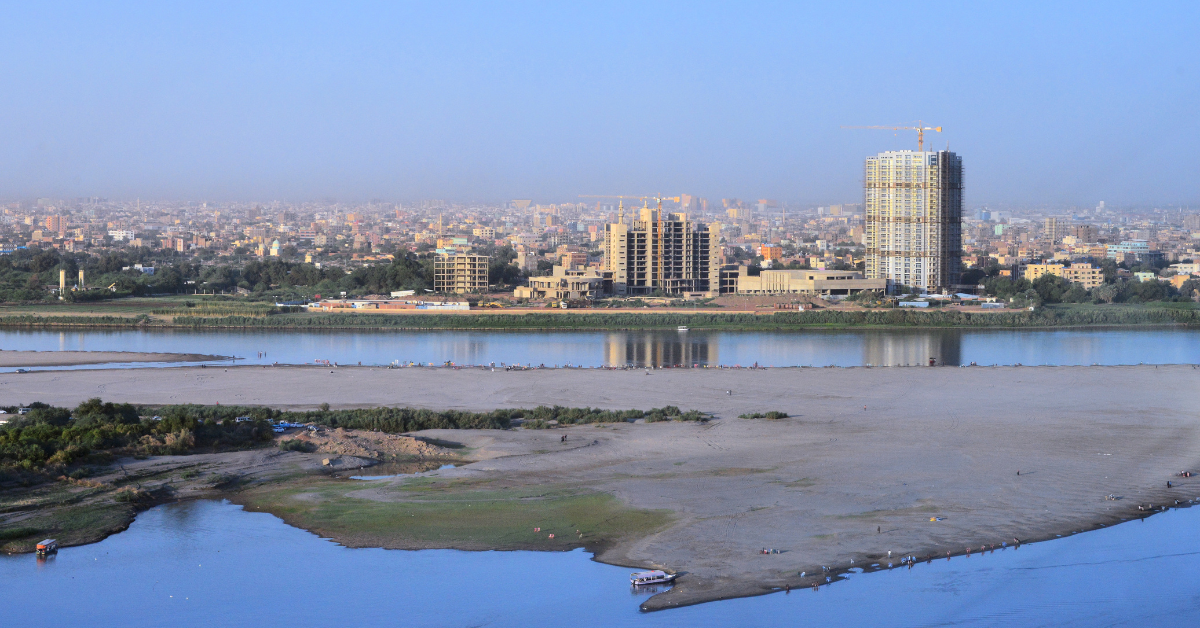Khartoum, the capital of Sudan, is written in katakana in Japanese and has no established kanji notation. Known as the place where the Blue Nile and White Nile meet, Khartoum carries a unique meaning derived from Arabic as the “elephant’s trunk.” This article explores the absence of kanji notation, Japanese perceptions of the city, and its cultural and historical significance.
Why Khartoum Has No Kanji Notation
The name Khartoum derives from the Arabic “al-Khurtum,” which means “elephant’s trunk.” This name comes from the fact that the confluence of the Blue Nile and White Nile resembles the shape of an elephant’s trunk.
In Japanese, katakana notation is the standard, and there has never been an established kanji version. Historically, Japan had limited interaction with Sudan, and assigning kanji could distort the meaning of the original name.
| City | Kanji Notation | Background |
|---|---|---|
| London | 倫敦 | Introduced via Chinese |
| Paris | 巴里 | Same as above |
| Cairo | 開羅 | Same as above |
| New York | 紐育 | Briefly used before WWII |
| Khartoum | None | Katakana only |
The Image Japanese People Have of Khartoum
For Japanese people, Khartoum is not a familiar city. Therefore, impressions are mainly shaped by news reports and geography lessons.
| Common Japanese Perceptions | Reasons |
|---|---|
| A place of conflict and instability | News about civil wars and coups |
| Desert and arid land | General image of Africa |
| A city on the Nile River | Knowledge from world history and geography |
| A city of foreign culture | Influence of Islamic and Arab traditions |
Thus, Khartoum is often associated with negative images, yet some are intrigued by its unique geographic feature as the meeting point of the Nile.
Historical and Cultural Background of Khartoum
Since the 19th century, Khartoum has grown under Egyptian and later British rule. Thanks to its strategic location at the confluence of the Nile, it has long served as a center of trade and politics.
Culturally, it is strongly influenced by Islam, with mosques and markets at the heart of urban life. Bazaars filled with spices and textiles convey the atmosphere of the Arab world.
| Feature | Description |
|---|---|
| Religion | Islam is dominant, mosques are symbols of the city |
| Daily Life | Markets and bazaars serve as hubs of interaction |
| Arts | Music and poetry traditions are preserved |
| Architecture | A mix of Islamic and colonial influences |
Modern Khartoum and Its Ties with Japan
Today, Khartoum is the political and economic hub of Sudan, and it also concentrates universities and research institutions. It functions as a base for international organizations and diplomatic activities.
Japan has provided support mainly in education and healthcare, primarily through JICA projects, where Japanese experts contribute to local development.
| Japan’s Involvement | Examples |
|---|---|
| Education | Training programs and school support |
| Healthcare | Public health initiatives and medical equipment |
| Infrastructure | Water resource management and technical cooperation |
The Sports Aspect of Khartoum
Sports act as a cultural element that unites people. In Khartoum, football is the most popular sport, and the city is home to well-known clubs.
| Club | Characteristics | Popularity |
|---|---|---|
| Al-Hilal | One of the top domestic clubs, competes in African tournaments | Very high |
| Al-Merrikh | Community-oriented, with a passionate fan base | High |
On match days, stadiums are filled with excitement, and football symbolizes social unity. Even amid political instability, sports bring people hope and joy.
Though sports exchange with Japan is limited, future international events could strengthen ties and improve Khartoum’s image in Japan.
Khartoum as a Tourist Destination
Although not widely recognized as a tourist city, the confluence of the Nile Rivers is a rare global spectacle and a major attraction.
The national museum showcases artifacts of Nubian civilization and ancient Egypt, making it a site of significant historical value.
| Tourist Spot | Feature |
|---|---|
| Nile Confluence | Meeting of the Blue Nile and White Nile |
| National Museum | Exhibits of ancient ruins and sculptures |
| Islamic Architecture | Historic mosques and old city buildings |
If stability improves, Khartoum has the potential to become a major hub for African tourism.
Conclusion
Khartoum is a city written only in katakana without a kanji notation. For many Japanese people, its image is shaped by news coverage of conflict and desert landscapes. Yet in reality, Khartoum possesses symbolism as the confluence of the Nile, rich cultural traditions, active sports communities, and promising tourist attractions.
In the future, as exchanges expand beyond education and healthcare into sports and tourism, Japanese perceptions may shift toward a more positive and multifaceted view. Khartoum is not simply “a distant city” but a place where culture, history, and international significance intersect.






